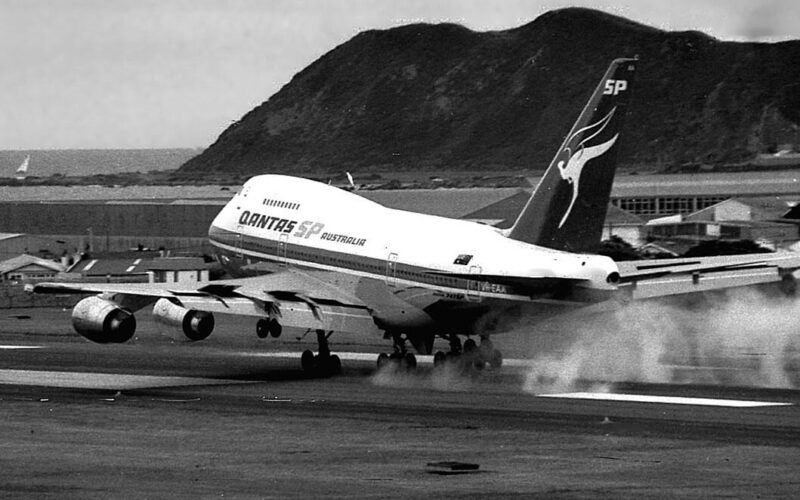On November 16, 1920, Paul McGinness, Hudson Fysh and Fergus McMaster, three World War One veterans, founded ‘Queensland and Northern Territory Aerial Services Ltd’ in Winton, a small, remote town in Queensland, Australia.
Longreach
Q.A.N.T.A.S., as it became known, began operations with local charter and pleasure flights. The first aircraft, an Avro 504K, was a two-seater biplane which had been assembled in Sydney.
The following year, Qantas moved from Winton to Longreach and on November 2, 1922, the first scheduled airmail and passenger service took flight. Founder Fysh piloted the Armstrong Whitworth F.K.8 aircraft from Charleville to Cloncurry.
By 1926, Qantas had become the only airline to build, fly and maintain its own aircraft. The company also began training apprentices and opened a flight school, attended by Dorothy Reis who in 1927 qualified as the first female pilot in Queensland.
In May 1927, Qantas signed an agreement with the Aerial Medical Service, formed by Reverend John Flynn. The accord marked the start of what is today The Royal Flying Doctor Service.
Arthur Affleck piloted the first flight from Cloncurry on May 17, 1928, using a leased Qantas De Havilland biplane and carrying on board the world’s first flying doctor.
During its first year, the Aerial Medical Service reached 225 patients in remote parts of the outback.
Double Sunrise
The Australian airline grew rapidly and, in 1934, Qantas and Imperial Airways launched Qantas Empire Airways, a new subsidiary for passenger and airmail flights between Australia and Great Britain.
Qantas flew the De Havilland DH-86, operating the leg from Brisbane to Singapore. The service marked Qantas’s first overseas flight and soon used flying boats with trips between the two nations taking 10 days.
During World War Two, after the fall of Singapore, Qantas continued to operate the vital air-link to Britain and the service become known as ‘The Double Sunrise’.
Navigating via the stars, in darkness via Ceylon (now Sri Lanka), the daring flights carried mail and passengers over Japanese occupied territory, lasting up to 33 hours with those on board experiencing two sunrises.
The service between Australia and Britain defined the airline. The ‘Kangaroo Route’ was born and led to the first appearance of the distinctive Qantas kangaroo logo.
City of Canberra
With the arrival of the Boeing 707 in the late 1950s, Qantas entered the jet age. The maiden aircraft ‘City of Canberra’ departed Sydney for San Fransisco via Nadi and Honolulu on July 29, 1959.
The jet halved travel times and, in 1965, a Qantas Boeing 707-300 made the first non-stop commercial flight between Australia and the USA.
Two years later in 1967, Qantas placed an order for four Boeing 747-200s at a list price of $123 million, receiving the revolutionary aircraft as the company entered its 50th year.
By the end of the decade, Qantas introduced Business Class, the first airline in the world to offer the premium service.
Spirit of Australia
The Australian Government privatized Qantas in March 1993, and the company was floated on the Australian Stock Exchange in 1995.
Qantas entered a new period of expansion, launching the first non-stop service between Melbourne and Los Angeles and resuming services to New York.
In 1999, Qantas, along with American Airlines (A1G) (AAL), Canadian Airlines, Cathay Pacific and British Airways, founded the Oneworld Alliance.
Throughout the early 2000s, Qantas firmed its long-haul operations, with the Boeing 747-400 entering the fleet in 2002. The iconic jumbo remained with Qantas until the type was retired in July 2020.
In 2000, the then CEO, James Strong, finalized an order for the Airbus A380, the first of which entered service in 2008 and became the flagship of Qantas.
At the time of the first delivery, Qantas had increased its ‘SuperJumbo’ order to 20 aircraft but later stopped deliveries after the twelfth aircraft.
In 2003, faced with increasing competition from Virgin Blue, Qantas launched Jetstar, a new low-cost airline. Over the years, the success of Jetstar has helped to defend and regain Qantas’s Australian market share.
Kangaroo Route
In 2012, Qantas announced a new strategic alliance with Middle Eastern carrier Emirates, including code sharing flights. The following year, it began flights to London via Dubai. However, in 2017, owing to low demand, the prestigious QF1/QF2 Kangaroo Route reverted to operating to London via Singapore.
With an ageing Boeing 767 and 747 fleet, Qantas opted for the Boeing 787 Dreamliner as a replacement. In 2008, the first direct flights between Australia and Europe were launched from Perth using the Boeing 787-9.
Project Sunrise
Qantas announced Project Sunrise in December 2017, the ambition being to connect Sydney and Melbourne to major global destinations including New York and London with non-stop services.
In May 2022, it placed a firm order for 12 Airbus A350-1000 aircraft. Deliveries of the A350-1000s are due in 2025 and Qantas has announced that the aircraft will seat a total of 238 passengers across four cabins, making for a very spacious onboard experience.
Domestically, Qantas has also announced plans to replace older Boeing 737 and 717 aircraft with Airbus A220 and A320XLR aircraft. Deliveries of the next-generation Airbus aircraft are due in late 2023 and will drive efficiencies within the domestic market.
More than a century has passed since three pioneering aviators envisioned an air service to connect outback Australia. McGuinness, Fysh and McMaster shared great optimism for the future of flight, and their determination transformed aviation in Australia.
From Winton, Queensland to the world, Qantas has established itself as one of the most respected flag carriers and, in the process, has become a national symbol of Australia.

